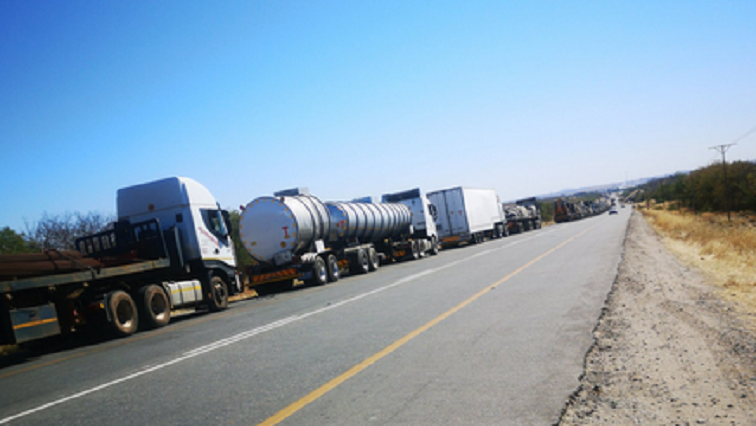US$300m upgrade for Beitbridge border post
The Zimborders Consortium has secured nearly US$300 million for the upgrade and modernisation of Beitbridge border post, the country’s busiest inland port of entry and one of the region’s key transit points, the company has revealed.
The Zimborders Consortium is made up of a group of Zimbabweans, South Africans, international entrepreneurs and financial institutions and experts.
The project, to be implemented under a Public Private Partnership with the Government, will be privately funded with a 17 and half years’ operating concession period following the completion of the construction works expected within two years.
“We are pleased to have received the support of such a wide range of financial institutions on this critical infrastructure project for the entire region,” Mr Francois Diedrechsen, chief executive of the Zimborders Consortium said.
“Beitbridge is one of busiest border posts in Africa, which not only connects Zimbabwe and South Africa but also serves as the transit point for the majority of north-south trade in Southern Africa. We have the ideal team to ensure the successful construction and long-term management of the concession and are ready to start construction.”
The project will include a major upgrade of the entire border post including roads, ICT infrastructure as well as the construction of a number of social projects to improve the town of Beitbridge’s critical infrastructure including a fire station, residential buildings, a sewerage dam, civil services and new water reservoirs.
“As a Zimbabwean native, this part of the world is especially close to my heart.
“The Beitbridge project is a fantastic development for the trade that supports the region’s economies,” said Mr Glynn Cohen, executive chairman of the Zimborders Consortium.
“The significant waiting times being experienced currently due to ageing infrastructure will be significantly reduced following the completion of the project, thereby facilitating an easier flow of goods and people across southern Africa, be it for tourism, private or business purposes.”
Research has shown that Southern Africa has witnessed an increase in the volume of commercial and private cross-border traffic.
This has put pressure on inland ports of entry as well as sea ports with the Beitbridge border post handling the largest volume of traffic in Southern Africa.
However, there had been no significant infrastructure development in the past decade. Incidences of smuggling and other illegal activities have increased. The existing infrastructure fails to contain the volume of traffic, enabling travellers to evade duty payment.
The project’s debt funding has been provided by various South African commercial banks and international development finance institutions, demonstrating their commitment to regional growth, with equity also provided by several investors.
The concession contract was initially awarded in 2018 following a competitive tender process, which was run according to international best practice.
These developments for Beitbridge come as South Africa is looking to Zimbabwe for resources for its proposed Musina-Makhado Special Economic Zone (SEZ) and this might include transfer of water from dams such as Zhove Dam and Tugwi-Mukosi.
The Musina-Makhado SEZ (MMSEZ) is located in the vicinity of the Beitbridge Border Post, which is one of the busiest ports of entry to South Africa and a gateway to the South African Development Community (SADC) countries.
An artist’s impression of the proposed expansion and upgrade of Beitbridge Border Post
Mr Lehlogonolo Masoga, CEO of Musina-Makhado, recently was quoted by the Global Africa Network saying the MMSEZ has the potential to become an inland inter-modal terminal, facilitated by its anchoring position along the North-South Corridor, and directly connecting to the country’s major ports through both N1 road and the Johannesburg-Musina railway line, for the trans-shipment of sea cargo and manufactured goods.
In the interview back in August this year, Mr Masoga said the MMSEZ will have an energy and metallurgical complex that will include the following plants: coal power, coke, ferrochrome, ferromanganese, pig iron, carbon steel, stainless steel, lime, silicon-manganese, metal silicon and calcium carbide.
This will be complemented by the logistics hub, agro-processing centre, light-to-medium manufacturing industries, SMME incubation centre, retail centres, hotels and residential amenities.
South Africa, however, does not have adequate resources for the MMSEZ and will look to neighbouring countries including Zimbabwe.
Responding to questions in the South African Parliament back in June 2020, Human Settlements, Water and Sanitation Minister Lindiwe Sisulu, said current and potential source mines for input raw materials for the MMSEZ “have been identified in various Provinces of South Africa, and neighbouring countries like Zimbabwe and Botswana”.
“Other countries like Zimbabwe are also potential supply areas for coal and ferro chrome at which the stricter environmental standards across the two countries shall be applied as per standard adopted international practice,” said Minister Sisulu.–herald.cl.zw










